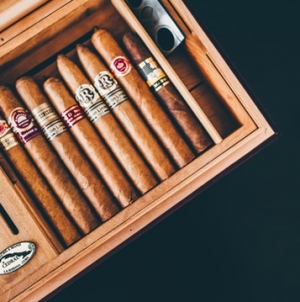Setting a Dinner Table for Casual and Formal Parties
Whether you’re entertaining friends or having family members over, dining events are some of the most popular social occasions for Brits. For centuries, dining events have been an important part of socialising, however, culinary trends have changed vastly. So, how do we dress our dining tables and create the right ambience for both formal and casual dinner parties?
Find out the differences between fine dining and informal parties to make sure you create the ideal ambience at your next dinner party.
How does a formal table look?
Formal dining events can help hallmark a special occasion or set the tone for an important evening. A formal table will have pre-set cloth napkins and glassware, as well as a quality tablecloth and elaborate centrepiece. Candelabras, sterling silver wine ewers and antique claret jugs ae also perfect for setting an elegant dining tone.
Tradition dictates that every guest at the table is given an empty plate for each course. A server would then bring in the food and offer it to each person in turn, rather than placing plated-up food on the table. However, this is quite old-fashioned, so you may prefer to serve your guests already-filled plates/bowls for each course. If you’re hosting a formal dinner party, preparing up to six courses is a generally accepted rule, which will often include a starter, fish course, meat course, dessert, and cheese.
How does an informal table look?
What constitutes as an informal dinner party? Generally, the entire atmosphere will be more relaxed and there’s less of a need to use your finest china and silverware. However, that doesn’t mean your table shouldn’t look nice and you could still use attractive centrepieces — such as an LED vase or decorative wooden bowl, if you wish.
On an informal table, you should keep flatware and cutlery to a minimum. When it’s time to serve, put all food on the table and let everyone help themselves. An informal dinner party can also be comprised of a single course or standard three. Go for the typical ‘starter, main and dessert’ dining structure, or simply cook up a hearty main meal and let your guests chat, laugh and drink as they dine.
Laying a formal dinner party table
Cutlery placement is key on a formal dining table and if you own it, using antique silverware may be a good call. Begin by placing your dinner plate in the centre with all forks to the left, and knives and spoons to the right. When it comes to the dessert fork and spoon, these must lie above the plate — the fork below the spoon — with the former pointing to the right and the latter, to the left. Next, all side plates go to the left of your dinner plate, while napkins go on the side plate — or you can put these on each dinner plate, if you prefer.
Bear these key formal dining tips in mind to make sure you stay true to dining traditions:
- Place cutlery in order of use, starting from the outside and working in.
- Make sure knife blades are facing the plate and fork prongs facing the ceiling.
- Salad bowls must be served on a salad plate, which is placed on top of the dinner plate. The soup bowl then goes on top.
- Red and white wine go in different glasses and sit above the table knife.

Laying an informal dinner party table
If you’re planning a more laid-back dining party, you can be more relaxed with how the table is set and what food you serve. However, you still want to create an attractive setting.
A creative way to make your dinner party memorable is by thinking of a theme. Whether this is simply a colour, or you want to go for something quirkier — like the seaside or fairy tales — a theme can really bring your informal dinner party to life. Get tablecloths and runners that complement your chosen theme and put out handmade crafts on the table to add personality. Why not also tweak formal table setting trends to make them more casual? For example, you can use wine corks, toothpicks and paper to make fun place card holders for each guest or opt for colourful, simple tealights to illuminate the table without the need for ornate candelabras.
Help your guests mingle and relax by serving food that’s more ‘interactive’. Go for fajitas or gourmet burgers that people can add their own toppings to rather than presenting them with a ready-made plate! Put everything out on the table in one go so that your guests can pick and choose which ingredients they want to eat and pass food around for a more sociable atmosphere.
Organising and preparing for a dinner party is exciting. Plus, these events are excellent for welcoming friends, family and colleagues into your home. Simply choose how formal or casual you wish the evening to be and use the appropriate tableware and dining etiquette to set the ideal tone!















